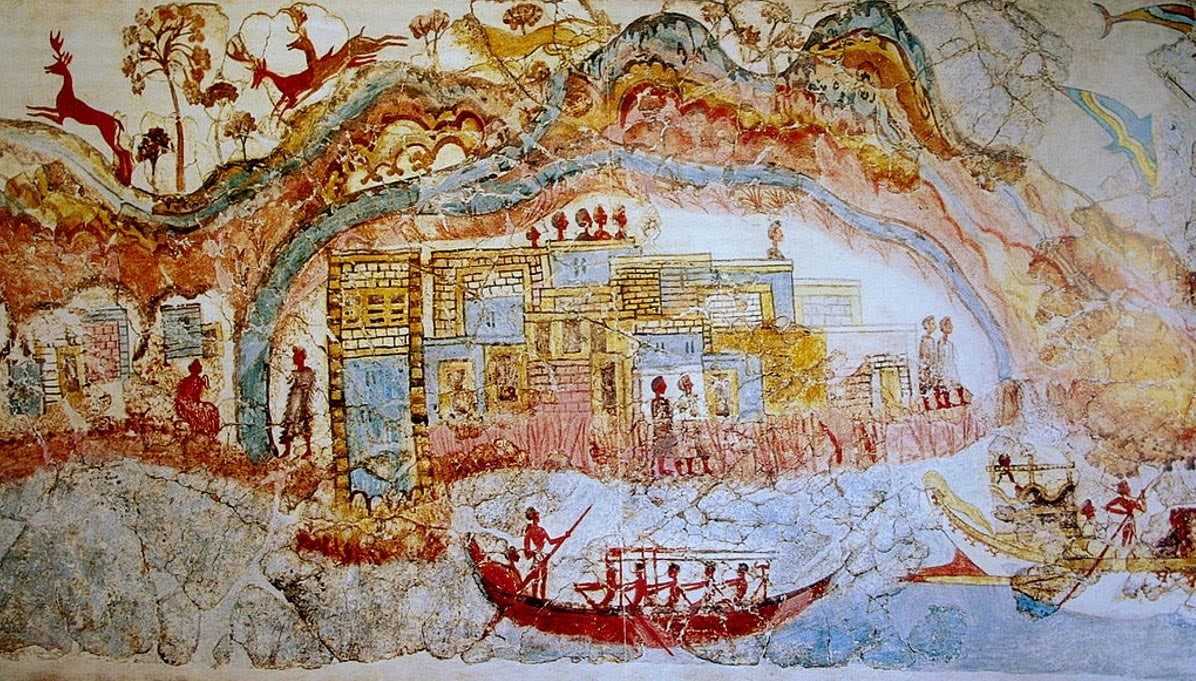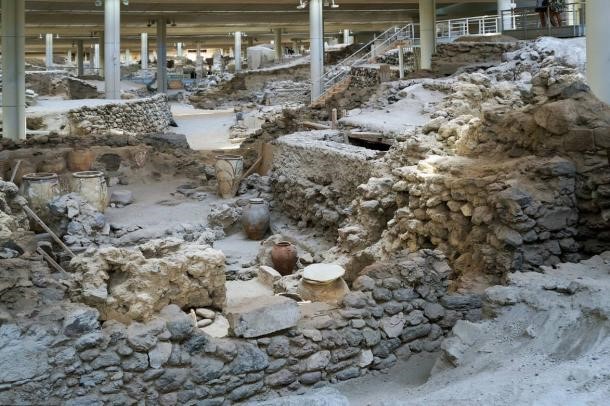
Akrotiri was a Bronze Age settlement located on the south west of the island of Santorini (Thera) in the Greek Cyclades. This settlement is believed to be associated with the Minoan civilization, located on the nearby island of Crete, due to the discovery of the inscriptions in Linear A script, as well as similarities in artifacts and fresco styles.
The earliest evidence for human habitation of Akrotiri can be traced back as early as the 5th millennium BC, when it was a small fishing and farming village. By the end of the 3rd millennia, this community developed and expanded significantly. One factor for Akrotiri’s growth were the trade relations it established with other cultures in the Aegean, as evidenced in fragments of foreign pottery at the site. Akrotiri’s strategic position between Cyprus and Minoan Crete also meant that it was situated on the copper trade route, thus allowing it to become an important center for processing copper, as proven by the discovery of molds and crucibles there.
Akrotiri’s prosperity continued for about another 500 years. Paved streets, an extensive drainage system, the production of high-quality pottery, and further craft specialization all point to the level of sophistication achieved by the settlement. This all came to an end, however, by the middle of the 2nd century B.C. with the volcanic eruption of Thera. Although the powerful eruption destroyed Akrotiri, it also managed to preserve the city, very much like that done by Vesuvius to Pompeii.

Elaborate and colorful fresco revealed at Akrotiri. Public Domain.
The volcanic ash has preserved much of Akrotiri’s frescoes, which can be found in the interior walls of almost all the houses that have been excavated in Akrotiri. This may be an indication that it was not only the elites who had these works of art. The frescoes contain a wide range of subjects, including religious processions, flowers, everyday life in Akrotiri, and exotic animals. In addition, the volcanic dust also preserved negatives of disintegrated wooden objects, such as offering tables, beds, and chairs.
Top image: The archaeological site of Akrotiri. Source: BigStockPhoto






